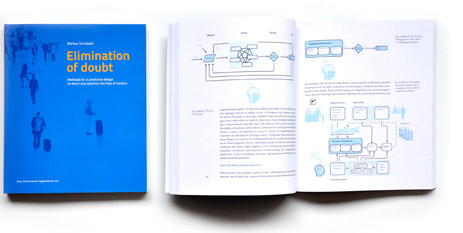PhD Thesis
Dissertation
Markus Schröppel
@
University of Lapland, Rovaniemi, Finland
Supervisor:
Prof. Dr. Brusila
Actual and Prospective
Literatur
Standards
Questionnaire
Lapin yliopisto, Rovaniemi
CORE, Tampereen yliopisto
Vita
Imprint
Elimination of doubt
Methods for a predictive design to direct and optimize the flow of visitors.

Doctoral thesis: Predictive system design solutions to direct and optimise the flow of visitors in large spaces
This study focuses on producing guidance aid for large, shared spaces through graphic design. The results of the study and the corresponding solutions and recommendations can be used to avoid problems in confronting icons and guidance systems. The presented solutions, with the array of methodologies and the focus on the user, enable us to efficiently check and evaluate the functionality of existing sign systems.
Only a moment?s disorientation can bring joy or cause an utter disaster, or lead to the loss of an entire annual holiday, or ruin the success of a business transaction. Such tragedies and changes of fortune happen every day at international airport terminals when passengers desperately search for the departure gate. The rapid development of international traffic characterises our increasingly globalised and ever more complex world. Long-haul travel is booming as a result of reduced fares, and airport terminals are suddenly populated by hordes of people unfamiliar with the local ?access interface? . Airports have formed in nodal points, where people from various cultural backgrounds and with differing levels of education need to reorient themselves in an unfamiliar and often confusing environment.
A key condition for ensuring that everything works smoothly in such an international junction is the fast reception and immediate processing of information by everyone involved. Numerous studies attest the difficulty experienced by airline passengers in trying to navigate their way through an unfamiliar and crowded environment with the help of a symbol- and text-based signage system.
Designers usually do not focus on the use pictograms. On the basis of a number of case studies, the following question has arisen: ?Is it possible to evolve a predictive system to develop, implement, and verify design solutions to direct and optimise the flow of visitors in large public spaces??
This research focused on the visual perception and spatial orientation of people seeking their way through large and crowded spaces. The moment of meaning-making is experienced differently by each individual and spans the entire spectrum of perceiving a designated item ? from manifold interpretations to absolute certainty. The various perspectives on ?situational awareness?, accompanied by a number of methodologies, provide solutions to the design process. Furthermore, taking into account perceptual psychology contributes to the systemic/holistic and user-centred design of orientation systems in public spaces.
Identifying and consulting the predictive parameters of a systematic process yields practicable solutions to the planning and evaluation of guidance and routing systems. The process reliability and processing quality of these solutions have been demonstrated in various national and international case studies. Through observation and interpretation, the ethnic habits and personal views of people were taken into account to develop the method. The capacity of the model and the operationalisation of the research demonstrated the effectiveness of the method in overcoming the barriers of age, language, and culture.
A variety of experiments and practical applications show that this thesis is not merely based on logical conclusions. Here are a few examples of applications already implemented through the method: the rework of the Public Guidance System at the Düsseldorf Airport (2007); Reflection on the Experience of Signage Without Signs: Krefeld (GER) Hospital (2008); Testing and Optimisation the Visual Saliency of Signs at the Bremen (GER) Airport (2009); Raising Public Awareness for the Design of Public Spaces and Signage in the Berlin (GER) Humboldthain Park (2010); and Development of a User-Friendly Design for a Signage System for Adults and Children at the Junior Uni, Wuppertal (GER) (2013).
The Thesis titled: »Elimination of doubt«
Methods for a predictive design to direct and optimise the flow of visitors
is now available printed: Acta Universitatis Lapponiensis 313
ISBN 978-952-484-857-2 at publications@ulapland.fi
or available as electronic version: Acta Universitatis Lapponiensis 181
http://urn.fi/URN:ISBN:978-952-484-858-9
Since the middle of the past century, the technical development of our means of transport and associated facilities has expanded to a degree that it is becoming more and more complicated to use. People are more mobile than ever before: they travel from one town to another, from one country to another and from one continent to another, and for this they require instructions for use which suit the particular function. This includes a universally comprehensible supply of information which is located in the centres of public transport and not only indicates the routes to and from the transport facilities and provides guidance within those centres, but also gives instructions on how to use the transport facilities themselves.



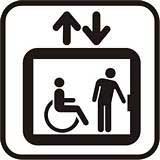



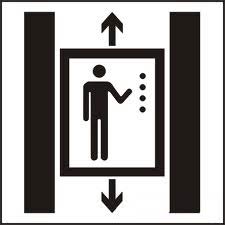
"Elevator" pictograms: AIGA · ERCO · Japan · Heiko Barmbold · Heiko Barmbold · City of Bruges (BE) · Hansgrohe AG · ISO 7001
The increasing growth of civil aviation in the 50s led the International Civil Aviation Organization (ICAO) to comply all typographical signs and issued a study to the needed international requirements of a pictural language understood by various ethnic groups. The sense of orientation alone is no longer enough to find your way in an international airport, also the reception of pictorial, graphic, written and spatial signals is needed. The goal of airport signs & wayfinding systems in airports is to show visitors their way. From finding the toilets, gates, tranfsers or even the coffee corner. Creating a wayfinding system in a airport which will have to guide thousands of visitors takes a in-dept case study of the visual environment, travellers stream, detailed prints of the building and much more.
But the freeze-framed gestures based on the western way of thinking are often insufficient for international public. The diversity of languages is increasing. The "Council of Graphic Design Association" (ICOGRADA) was to promote international projects for the unification of icons. The "symbol plan" of the United Nations started in 1964 with the call for international and obligatory usage of formulated symbols. "The American Institute of Graphic Art" (AIGA) in cooperation with the US Department of Transportation developed internationally recognizable characters which require legibility in varied global cultures and age groups. The International Organization for Standardization, (Geneva), ISO, arranged worldwide test series for the appraisal amongst scientific criteria of the optimal expression in the character in the way of semiotic and pychology of perception. The organisation is monitoring the standard ISO 7001, the standardized "graphic symbols for public information." In ISO 9186 are all procedures and criteria for assessing and reviewing the comprehensibility of pictograms fixed.
To achieve successful passenger orientation, an evaluation of the ease of passenger orientation in the terminal is necessary. It is recognized that the success of the passenger's ability to locate a facility can be based on a visibility index. Orientation is more than just hang signs and better signage doesn't just mean better looking signs. Pictograms are supposed to be self-evident, but they produce doubt. The freeze-framed gestures need also knowledge of the western way of thinking.



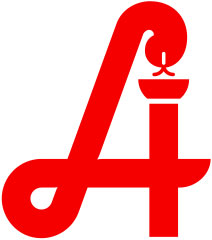
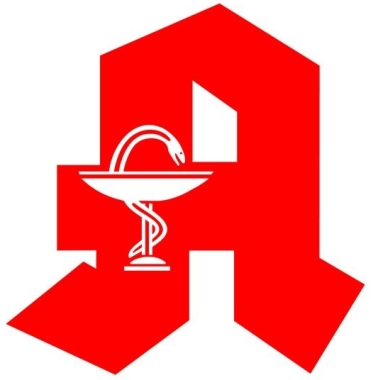
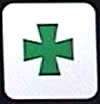

"Apothecary, pharmacy": ERCO (0068 Apotheke) · Pharmacy Fairbury · Lyfjaverslun (Iceland) · Apotheke (Austria) · Apotheke (Germany)
· Pharmacy (Alicante Airport, ES) · Pharmacy (USA)
The Serpent of Epidarius- on the Aesculap rod. As a Greek god of medicine Aesculap carries a rod with a serpent around it. The serpent represents in the Far and Middle East still today immortality, wisdom and healing.

historical developement of german pharmacy signs.
Differences in wayfinding behaviours between gender, age group, type of travel group and level of familiarity with the environment are identified. Females tend to follow a crowd and are more likely to use wayfinding strategies such as Least Time, First Noticed, and Different from Previous Route Taken than males. Males are more likely than females to use Vegetation Types and Track Surfaces as their wayfinding landmarks, and they prefer Most Scenic wayfinding strategies.
Vitruvius defined the qualities of architecture in his famous book: »De architectura« (1st century BC) that a structure must exhibit the three qualities: firmitas (we might translate as durability), utilitas (functionality) and venustas (beauty). On the one hand, I attempt these qualities into a practical formula to indicate the precise mix of qualities required (Mijksenaar, 1997):
· utility (practicability),
· satisfaction
in international airport signposting.
With the aid of Charles S. Peirce's theory of signs, a theory of reasoning and of cognition. His phenomenology asserts that all modes of thinking depend on the use of signs: using the » categories« or »modes of being« which help to categorize all phenomena objects of concepts of signs:

· »The typical ideas of Firstness are qualities of feeling, or mere appearances.«*
· »The type of an idea of Secondness is the experience of effort, prescinded from the idea of a purpose.«*
· »Thirdness is the mode of being of that which is such as it is, in bringing a second and third into relation
to each other.«*
* Collected Papers of Charles Sanders Peirce ›A Letter to Lady Welby‹, 1904
Etic vs. Emic:
Is it possibile to percieve a truly objective description of the perceptibility of public symbolic systems or is the description of any human social behavior understanding the culturally specific meaning of specific beliefs and practices the subjective knowledge of the observer.
[first introduced by Kenneth Pike, 1954]
Investigation of the semantic relevance of an existing pictogram:
P (ωi | e)
[relevancy of a pictogram e in relation to a query ω ]
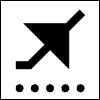

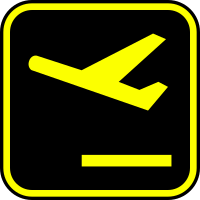

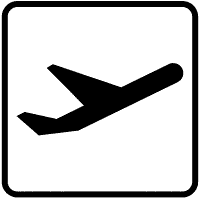

![]()

"Departure": Ольга Куликова, МХУПИ (Moscow Art College of Applied Arts and Academy of Graphic Design)
· AIGA · Cheongju International Airport (South-Korea) · Logo-Arte (It) · Hong Kong Airport ·
· ERCO (e.g.: Frankfurt Airport) · Istanbul Atatürk Airport (Turkey)
On the other hand is a passenger as described by ACI (Airports Council International) is someone who arrives in, departs from, or transfers through an airport. The passenger journey in an airport can be represented as a flowchart, it has usually a "Start" and an "End" and it has a conditional or decision part, where the signs/directions inside the terminal play the parts of a crucial role.

Example: flowchart representing a process
We analyze a typical passenger journey, as described here, broken down into a series of steps, starting from home with travel documents and visas, by car to the airport (landside), right though to check-in, border control, in-flight security, shopping (airside), entering the gate, the flight itself ... till the final destination.

drawings by Natascha Kelka, Jan. 2014
Schematic plan of a terminal building
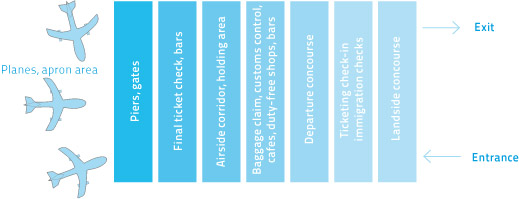
Fewings, R.: ›Wayfinding and Airport Terminal Design‹, The Journal of Navigation, May 2001
Are we able do express complex instructions, or are those pictural representations not necessarily easyier to understand than a written expression, but the power of our visual material is limited .
And the graphical material itself is limited to seven visual variables: position, form , orientation, color, texture, value, and size; (according to Jacques Bertin). For better understanding the visual perception of guidance- and orientation systems we use the triadic relationship between physical signs, the objects to which they refer, and the human interpreter. The sign made up of a signifier or sensory pattern, and a signified, the concept that is elicited in the mind by the signifier, accordingly more detailed in Umberto Eco's model of communication (Eco 1995, p. 123).
Ignored cultural semiotics?
Was it a mistake when ISO - International Organization for Standardization had defined the present existing worldwide set of icons and related functions, not paying attention to cultural semiotics. Does this indicate a needed change in our cross-cultural communication and does it show a turning point in our future development of the arsenal of iconographic, geometric, linguistic and formal conventions to mediate spatial information into pictorial representation?

"das allgäu" (bei isny) by Otl Aicher, detail from the booklet for the Allgäu region (German region in the southwest of Bavaria)
Objectives
Investigation of the process of orientation in shared common spaces as well as investigation of the individual interpretation of given pictographic (iconic) information in cultural context. Developing a critical attitude towards existing orientation and information systems. Examination of the iconographic particularities of orientation systems and their demands on the recipients. According to existing flow charts which show the designated processes on an airport and highlight where the system's points are and where a passenger expected is to go from each point.







"Restaurant" pictograms: 国标代码 LB/T 001-1995 (China) Western Restaurant
· 国标代码 LB/T 001-1995 (China): Chinese restaurant · ERCO Nº 0195 · AIGA · ISO 7001: PI CF 001
· Doha International Airport ﻣ ﻄﺎر اﻟﺪوﺣﺔ اﻟﺪوﻟﻲ · 快餐 LB/T 001-1995 (China): Chinese Snack Bar
Hypotheses
We have to change the tools for environmental graphic design to create a well-functioning communication. With the focus on visual communication we have to factor also pervasive mobile applications into consideration. We need to overhaul the pictographic expressions. We should take as the standard the one symbol which does communicate the intended meaning most readily to most people.
Research Question:
Is it possible to find a scientific method to develope and evaluate international legable, understandable icons?


»Standard Isotype System« by Ravi Pooahaiah, Industrial Design Centre (IDC) at IIT Bombay, India. »Office« 0445 by ERCO
Methods
The research work is in the range of visual perception, perception psychology of guidance- and orientation systems in public-space and buildings and will challenge the semantic and semiotic function of the used signs as well as their effectiveness. In the study series, the signs of the thirty world's busiest airports, measured by number of total passengers traffic (data provided by Airports Council International) will be examined. The signposts used there will be taken out of their context and examined in an international online survey on the three specified grades: reliability · utility · satisfaction. A great advantage of this investigation: it is not susceptible to the kinds of dogmas that may arise from the interpretation of functionality and/or design sensitivities. An international evaluation will create several valuation models for one and the same character to determine patters, which allows to detect weaknesses that would otherwise not be visible under the specified methods for testing the comprehensibility of graphical symbols like in ISO 9186-1 and 2:2007. Combined with the analytical investigation of the intersection in the flowchart of passenger movements in an airport gives us information about the semantic relevance of the signpost and its basic necessity.
Findings
First findings of an investigation in visual communication in public spaces on the one hand at Düsseldorf International Airport (Germany) made obvious the locations of all shops and restaurants are difficult to find, spatial guidance is hidden for inattentive passenger. Together with my students onsite my lectures »Environmental Graphics« at the University of Lapland, we have obtained data from a first examination at the City Airport Bremen (BRE) and evaluated over a possible increase of the conspicuity index of the existing signage system. The result was very surprising for everyone involved, it shows that simple modifications in colour can double the legibility of a sign easily.

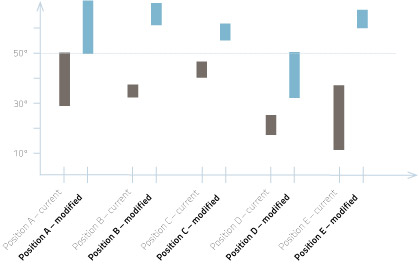
Conspicuity or the visibility of the signs increased by simple redyeing the objects. (total of 33 probands)
Together with the students at my course »M4 Grafik im Raum« at the HMKW Hochschule für Medien, Kommunikation und Wirtschaft (University of Applied Sciences), Berlin, (Germany) we had investigated the readableness of the guidance system of the Lübeck Airport (LBC) and in spring 2012 at the new Berlin-Brandenburg-International (BER), developing different case scenarios.







We developed a guidance system for the urban district »Brunnenviertel - Ackerstrasse« Berlin in 2012/13.

We are involved in the design and development of a user centered guidance for the Junior Uni, a private, nonprofit educational institution for children and young people in Wuppertal (GER).
 We are involved in the design and development of a user centered guidance for the Junior Uni, a private, nonprofit educational institution for children and young people in Wuppertal (GER).
We are involved in the design and development of a user centered guidance for the Junior Uni, a private, nonprofit educational institution for children and young people in Wuppertal (GER).

»Orientation with a lot of ›brain‹ « called the public and the Junior university's management our signage solution after the opening on dec. 12th 2013. With great commitment, enthusiasm and implemented of time the students and me managed establish a wayshowing system that also transports knowledge and taking inspiration from.
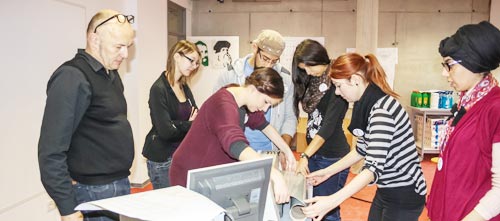
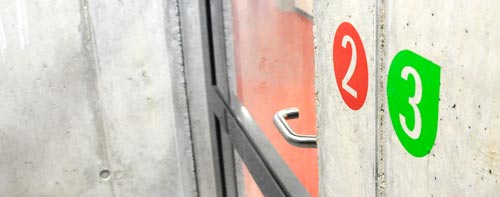
New projects will follow.

